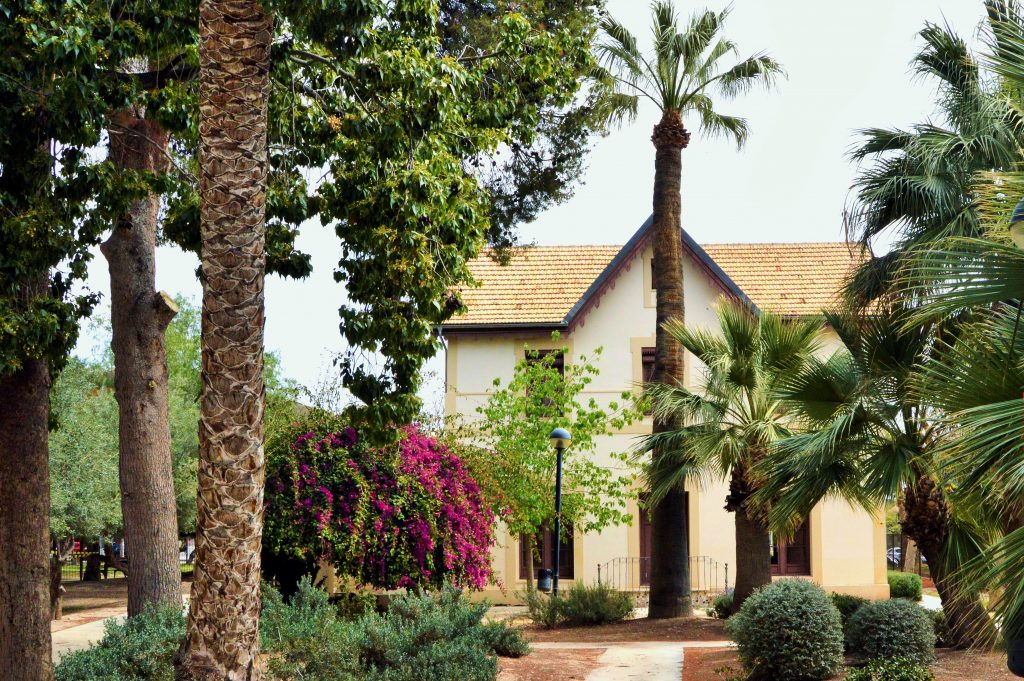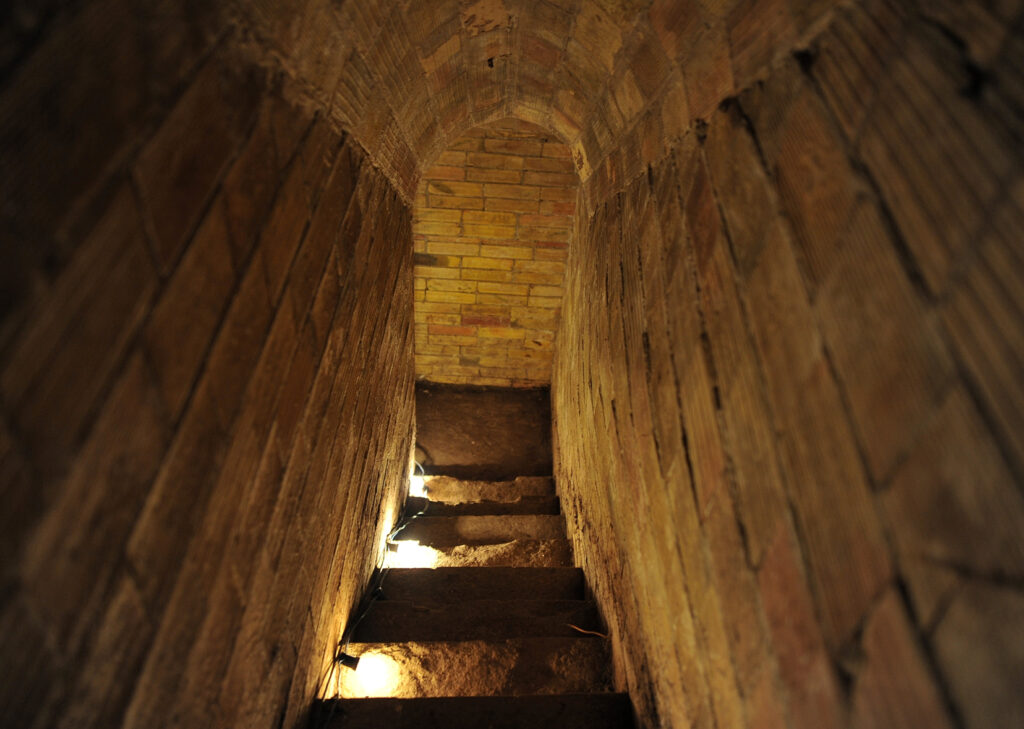Pedro José Refuge

The Pedro José estate, today the Peace Courts, houses one of the most relevant traces that the Civil War has left on the Alicante landscape: a tunnel-type air-raid shelter that was the protagonist of the final chapter of the conflict.
These types of constructions, thanks to the modification of the cultural heritage law of the Valencian community, are today considered real estate of local relevance, and therefore, are protected. Until not many years ago, these were hidden, but thanks to the work of recovery and dissemination of Historical Memory we can learn about these elements, silent witnesses of the episodes in which they were protagonists.
Although the city of Alicante was the target of the bombings due to its status as a republican rearguard city during the conflict, Sant Joan d’Alacant, as the geographical center of the Alicante Huerta, was an enclave of several private refuges in farms seized by the military. Among these is that of the Finca El Reloj, occupied by General José Miaja. Furthermore, Sant Joan d’Alacant was also the destination of those Alicante residents who, terrified, fled every night taking the tram to spend the night in the neighboring towns of Huerta Alicante, an episode known as “the column of fear.”

The location of the air raid shelter on the Pedro José farm has been possible thanks to ethnographic research work. This has allowed us to know that at the beginning of the conflict it was seized from the Ivorra family, who had to move to another property and became the residence of Carabinieri Lieutenant José Muñoz VizcaÃno, who ordered the construction of the air-raid shelter under the house. Among the oral sources consulted, the last owner of the estate, Carmen Ivorra, and the daughter of the estate’s landlady, Rafaela Baeza Seva, stand out, who made a description of how they remembered the structure and the entries it had.
From this information it was possible to begin the intervention phase in 2016 and 2017 directed through an archaeological action to locate the entrances and excavate them, which has revealed an air raid shelter with three entrances: the first, on the main façade of the House; the second, in the back; and a third that has not yet been located exactly but is known to be connected to the house’s cellar. This entrance, according to oral sources, was large, and would be the main one. The other two entrances have been excavated, revealing the stairs and the central hallway.
The central room of the shelter has a cupboard and a small shelf. In addition, a barn has been discovered closing the corridor that would connect with the winery. This barn was built in the post-war period, when the Ivorra family returned to the farm. Some elements have also been found that would indicate the presence of lighting inside the shelter.
Beyond its architectural characteristics, this refuge stands out because it was the scene of the last chapter of the Civil War: the change of powers in the Alicante capital, a diplomatic surrender that would seal the end of the conflict. The Falange representative in Alicante, José Mallol Alberola, was in charge of negotiating with Carabineros Lieutenant Colonel José Muñoz Vizcaíno to organize a bloodless end to the War in the province. This occurred in the shelter’s warehouse in a series of interviews between the two. Once the Alicante authorities abandoned the city, José Muñoz acquired the position of military governor, the transfer taking place in an office in the capital. José Mallol, for his part, acquired the position of civil governor, being in command until the troops entered the city. Thanks to Mallol’s autobiography “La Estampida” (2000), these historical events have been documented, among other publications of great historical rigor such as the publication by Aldeguer and Santo (1999), “Alicante, 1939”.
In recent years, due to the enhancement of the traces of the defensive and war heritage that have lasted to this day, it has led local rulers to become aware in their locality about the tourist and educational potential that these resources have in the contribution of the symbolic values ​​identifying a territory. Without a doubt, the Finca Pedro José shelter meets this potential in addition to being the only one currently excavated in the municipality. The proposal to enhance and museumize it is, therefore, logical. This proposal seeks to achieve a greater historical understanding and knowledge of the territory shared by Alicante and Sant Joan during the period of the Civil War. Thus, the Pedro José refuge would become part of an essential stop on a route on the defensive heritage of the Civil War between both towns in order to offer alternative tourism to the sun and beach so characteristic of the Costa Blanca.
